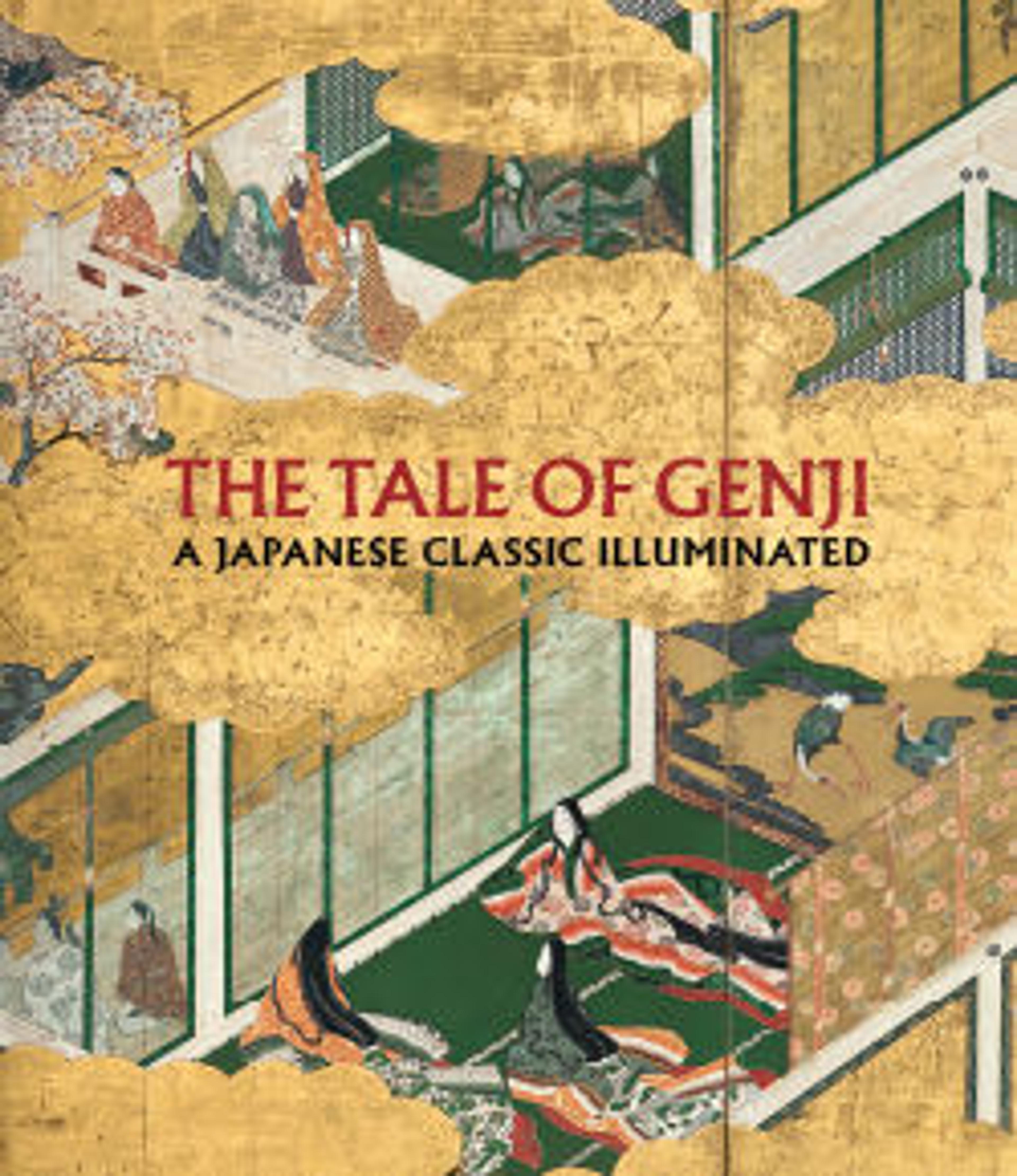A Fraudulent Murasaki’s Rustic Genji by Ryūtei Tanehiko
Much of the stimulus for late Edo Genji pictures (Genji-e) was due to Ryūtei Tanehiko (1783–1842), who completely rewrote The Tale of Genji as a gōkan (popular literature published in bound volumes) in thirty-eight chapters. The protagonist, Mitsuuji, modeled on the courtier Genji, the “Shining Prince,” is a son of the shogun who poses as a philanderer in the licensed pleasure quarters.
The colorful covers and black-and-white illustrations by Utagawa Kunisada propelled its success, helping it become the first Japanese book to sell over ten thousand copies. The frontispiece of the first volume reproduces the inkstone from Ishiyamadera Temple, said to be used by Murasaki Shikibu when she began to write the tale.
The colorful covers and black-and-white illustrations by Utagawa Kunisada propelled its success, helping it become the first Japanese book to sell over ten thousand copies. The frontispiece of the first volume reproduces the inkstone from Ishiyamadera Temple, said to be used by Murasaki Shikibu when she began to write the tale.
Artwork Details
- 柳亭種彥作 歌川國貞画 『偐紫田舎源氏』
- Title: A Fraudulent Murasaki’s Rustic Genji by Ryūtei Tanehiko
- Artist: Utagawa Kunisada (Japanese, 1786–1864)
- Period: Edo period (1615–1868)
- Date: 1829–42
- Culture: Japan
- Medium: Set of nineteen woodblock-printed booklets; ink on paper, color-printed covers
- Dimensions: Each: 6 7/8 × 4 5/8 in. (17.5 × 11.8 cm)
- Classification: Illustrated Books
- Credit Line: Gift of Miki and Sebastian Izzard, 2018
- Object Number: 2018.914.1a–v
- Curatorial Department: Asian Art
More Artwork
Research Resources
The Met provides unparalleled resources for research and welcomes an international community of students and scholars. The Met's Open Access API is where creators and researchers can connect to the The Met collection. Open Access data and public domain images are available for unrestricted commercial and noncommercial use without permission or fee.
To request images under copyright and other restrictions, please use this Image Request form.
Feedback
We continue to research and examine historical and cultural context for objects in The Met collection. If you have comments or questions about this object record, please complete and submit this form. The Museum looks forward to receiving your comments.
